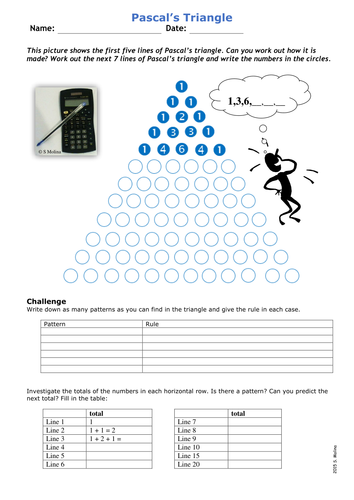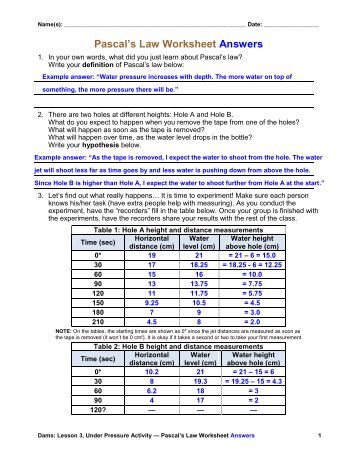Today’s Wonder of the Day was inspired by Tan. Tan Wonders, “What is Pascal's triangle ” Thanks for WONDERing with us, Tan!
We were walking through the Wonderopolis cafeteria the other day when we saw a square having lunch with a triangle and a circle:
Square: What are you two eating?
Pascal's Triangle: To access this worksheet please sign in to your Transum subscription account. If you do not yet have an account and you are a teacher or parent you can apply for one here. A Transum subscription also gives you access to the 'Class Admin' student management system, the answers to all of the online activities and opens up ad.
Circle: A piece of pi.

Pascal S Triangle Worksheet Pdf
Triangle: A slice of pizza.
Square: Cool…nothing like a good square meal to get you through the day!
Triangle: Later Circle! I'll see you around! It's getting too hot in here.

Circle: You're right, triangle. I'm 360 degrees!
These punny characters continued for a while, but we were in no shape to continue to listen to so many bad geometry jokes!
All joking aside, today's Wonder of the Day features a very special version of one of those shapes: the triangle. Specifically, we'll be discussing Pascal's triangle.

Pascal's triangle is an infinite, equilateral triangle composed of numbers. The numbers that make up Pascal's triangle follow a simple rule: each number is the sum of the two numbers above it.
Pascal's Triangle Formula
Looking at Pascal's triangle, you'll notice that the top number of the triangle is one. All of the numbers in each of the sides going down from the top are all ones. The numbers in the middle vary, depending upon the numbers above them.
Since Pascal's triangle is infinite, there's no bottom row. It just keeps going and going. Pascal's triangle is named for Blaise Pascal, a French mathematician who used the triangle as part of his studies in probability theory in the 17th century.
Blaise Pascal didn't really 'discover' the triangle named after him, though. It has actually been studied all over the world for thousands of years. For example, historians believe ancient mathematicians in India, China, Persia, Germany, and Italy studied Pascal's triangle long before Pascal was born. Pascal did develop new uses of the triangle's patterns, which he described in detail in his mathematical treatise on the triangle.
The basic pattern of Pascal's triangle is quite simple. Despite its simplicity, though, Pascal's triangle has continued to surprise mathematicians throughout history with its interesting connections to so many other areas of mathematics, such as probability, combinatorics, number theory, algebra, and fractals.
So why is Pascal's triangle so fascinating to mathematicians? The more you study Pascal's triangle, the more interesting patterns you find. This is important in mathematics, because mathematics itself has been called the 'study of patterns' and even the 'science of patterns.'
Pascal's Triangle Pdf
Many of the mathematical uses of Pascal's triangle are hard to understand unless you're an advanced mathematician. Even young students, however, can recognize a couple of the simpler patterns found within Pascal's triangle.
Pascal's Triangle Worksheet Answers
For example, the left side of Pascal's triangle is all ones. The next set of numbers in, known as the first diagonal, is the set of counting numbers: one, two, three, four, five, etc. You'll also notice an interesting pattern if you add up the numbers in each horizontal row, starting at the top. The sums double each time you descend one row, making them the powers of the number two!